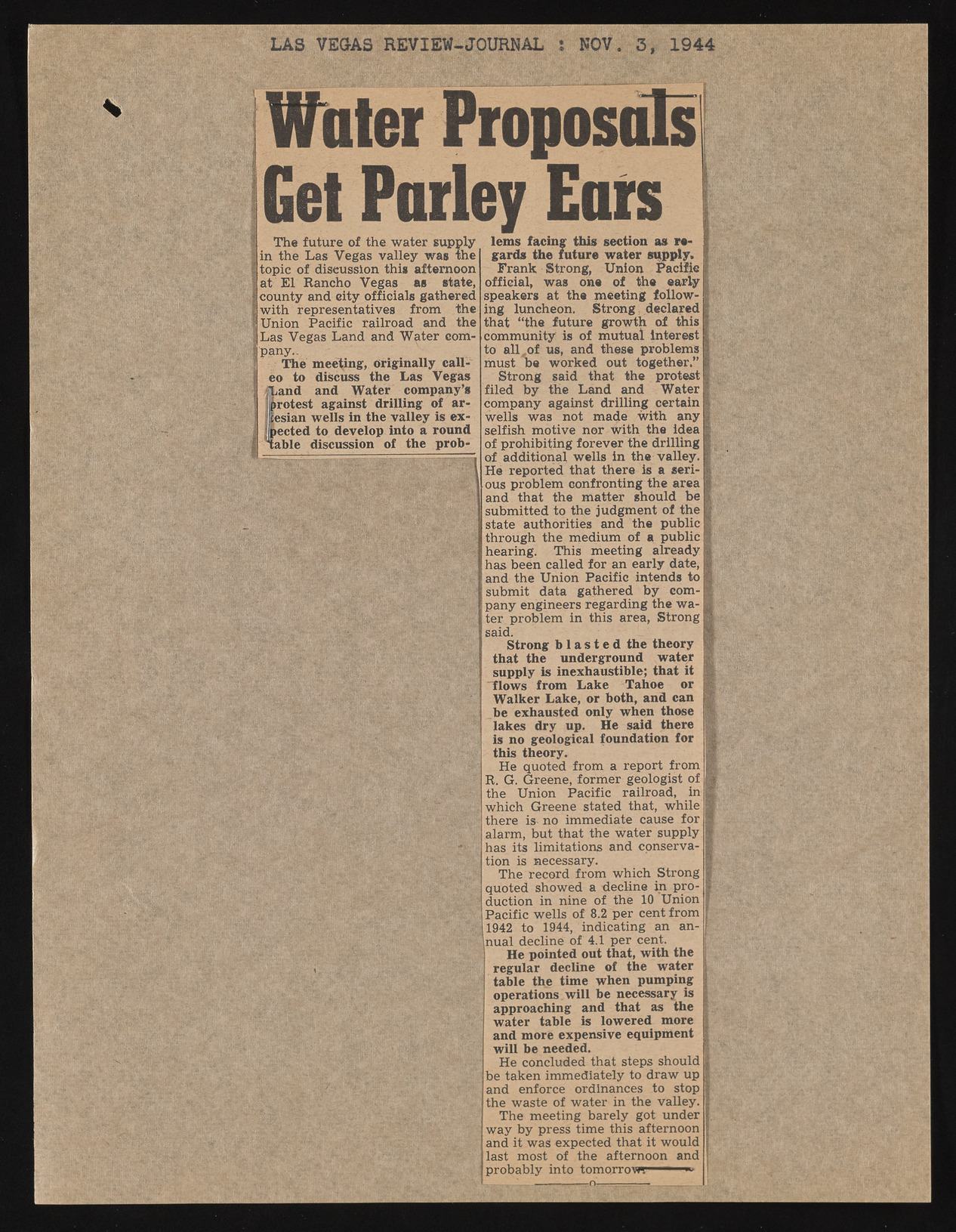Copyright & Fair-use Agreement
UNLV Special Collections provides copies of materials to facilitate private study, scholarship, or research. Material not in the public domain may be used according to fair use of copyrighted materials as defined by copyright law. Please cite us.
Please note that UNLV may not own the copyright to these materials and cannot provide permission to publish or distribute materials when UNLV is not the copyright holder. The user is solely responsible for determining the copyright status of materials and obtaining permission to use material from the copyright holder and for determining whether any permissions relating to any other rights are necessary for the intended use, and for obtaining all required permissions beyond that allowed by fair use.
Read more about our reproduction and use policy.
I agree.Information
Digital ID
Permalink
Details
More Info
Rights
Digital Provenance
Publisher
Transcription
LAS VEGAS REVIEW-JOURNAL l NOV. 3, 1944 Water Proposals Get Parley Ears The future of the water supply I in the Las Vegas valley was the | topic of discussion this afternoon at El Rancho Vegas as state, I county and city officials gathered | with representatives from the Union Pacific railroad and the Las Vegas Land and Witter company.. ? The meeting, originally call-eo to discuss the Las Vegas {Land and Water company’s protest against drilling of ar-j lesian wells in the valley is ex- Ipected to develop into a round j Table discussion of the problems facing this section as regards tiie future water supply. Frank Strong, Union Pacific official, was one of the early speakers at the meeting following luncheon. Strong. declared that “the future growth of this community is of mutual interest to all of us, and these problems ihust do worked out together." Strong said that the protest filed by the Land and Water company against drilling certain wells was not made with any selfish motive nor with the idea of prohibiting forever the drilling of additional wells in the valley. He reported that there is a serious problem confronting the area and that the matter should be submitted to the judgment of the state authorities and the public through the medium of a public hearing. This meeting already has been called for an early date, and the Union Pacific intends to submit data gathered by company engineers regarding the water problem in this area, Strong said. Strong b l a s t e d the theory that the underground water supply is inexhaustible; that it "flows from Lake Tahoe or Walker Lake, or both, and can be exhausted only when those lakes dry up. He said there is no geological foundation for this theory. He quoted from a report from R. G. Greene, former geologist of the Union Pacific railroad, in which Greene stated that, while there is- no immediate cause for alarm, but that the water supply has its limitations and conservation is necessary. The record from which Strong quoted showed a decline in production in nine of the 10 Union Pacific wells of 8.2 per cent from 11942 to 1944, indicating an ann u al decline of 4.1 per cent. He pointed out that, with the I regular decline of the water 1 table the time when pumping j operations will be necessary is j approaching and that as the j water table is lowered more and more expensive equipment 1 will be needed. He concluded that steps should jbe taken immediately to draw up land enforce ordinances to stop jthe waste of water in the valley. The meeting barely got under j way by press time this afternoon I and it was expected that it would jlast most of the afternoon and I probably into tomorrow 1 ?“ —

